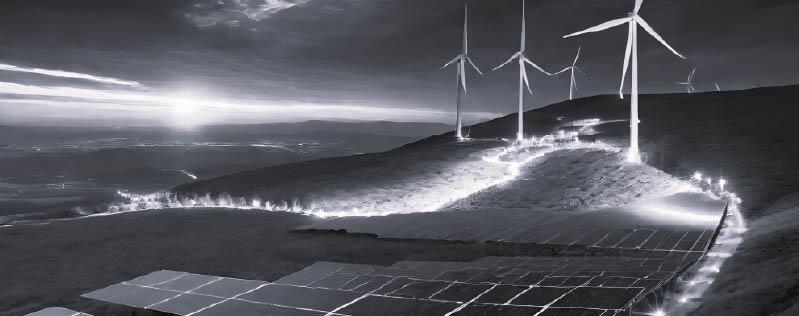Bioenergy- What is it?
Tips & Tricks • 2 min read • May 23, 2024 • Written by: Natasha Osborne

In this week’s blog post, we will be discussing bioenergy: what it is and how organic matter can be used to generate clean electricity and carbon-neutral gas.
Bioenergy refers to energy produced from organic matter, also called biomass. It is used to produce fuels for transportation, heat, electricity, and other products. Burning biomass releases carbon dioxide into the atmosphere; however, as it releases the same amount of carbon that was absorbed during the biomass's growth, it helps maintain a balanced carbon cycle. This makes bioenergy a near-zero-emission fuel. Globally, bioenergy is one of the largest sources of renewable energy, accounting for 55% of renewable energy and over 6% of the global energy supply.
Why use bioenergy?
Now that we know what bioenergy is, why use this method over traditional sources? The main purpose of using bioenergy is to reduce the amount of fossil fuels burned, thereby helping to meet carbon reduction goals.
- Bioenergy is a renewable source that can replace carbon-intensive fossil fuels.
- Biomass can fuel airplanes, ships, and trucks.
- The combination of bioenergy and carbon capture technology can help remove CO2 from the atmosphere.
How does biomass produce energy?
Biomass is also referred to as ‘feedstock’ when it is used as an energy source. Feedstock can be specifically made for energy content. The waste products can be supplied from a variety of different industries, such as food processing, agriculture, and timber production.
Dry combustible feedstock such as wood pellets are burnt in boilers or furnaces. This boils the water creating the steam that drives the turbine to generate electricity. Wet feedstock, like food waste is placed into sealed tanks where they rot and produce methane gas (biogas). This gas is collected and burnt to generate electricity. It can be used in the national grid and used for cooking and heating.
Bioenergy is a very flexible energy source and production can be increased or decreased to meet demand. It is a great back up for weather dependant renewable energy sources such as wind and solar.
How environmentally friendly is bioenergy?
The overall sustainability benefit of bioenergy depends on whether waste feedstock or energy crops are used. Waste biomass naturally releases gases as it decomposes, so collecting and burning this gas for energy is environmentally advantageous compared to letting it release methane.
Energy crops are specifically grown for generating energy. To maintain balance, new energy crops should be planted to absorb the carbon dioxide released when they are burned, keeping the carbon cycle ongoing.
The future of bioenergy
As we continue to look for methods that can help with the climate change transition, bioenergy is growing in significance due to its potential role.However, it competes with land that could be used for food production. Developing policies that create a balance is crucial to avoid severe consequences. While bioenergy is beneficial for reducing carbon emissions and meeting climate goals, it can be costly in terms of land use. Therefore, bioenergy must either be more cost-effective or more sustainable than other decarbonization technologies, considering the land system costs.
We hope you enjoyed reading this week’s blog and learnt something new. If you’d like to let us know what you thought, please leave a comment in the section below. We appreciate any feedback and would also love to know what else you’d like to read about, so feel free to let us know what you’d like to learn about next. Why not share this with others who may also enjoy reading it too!
Related Articles

Tips & Tricks
Mining - Solar Panels

Tips & Tricks
The Future Of Coal

Tips & Tricks
Logistics In Africa
Don't Miss Out On Our Updates
Sign up and Join Our Newsletter Today
